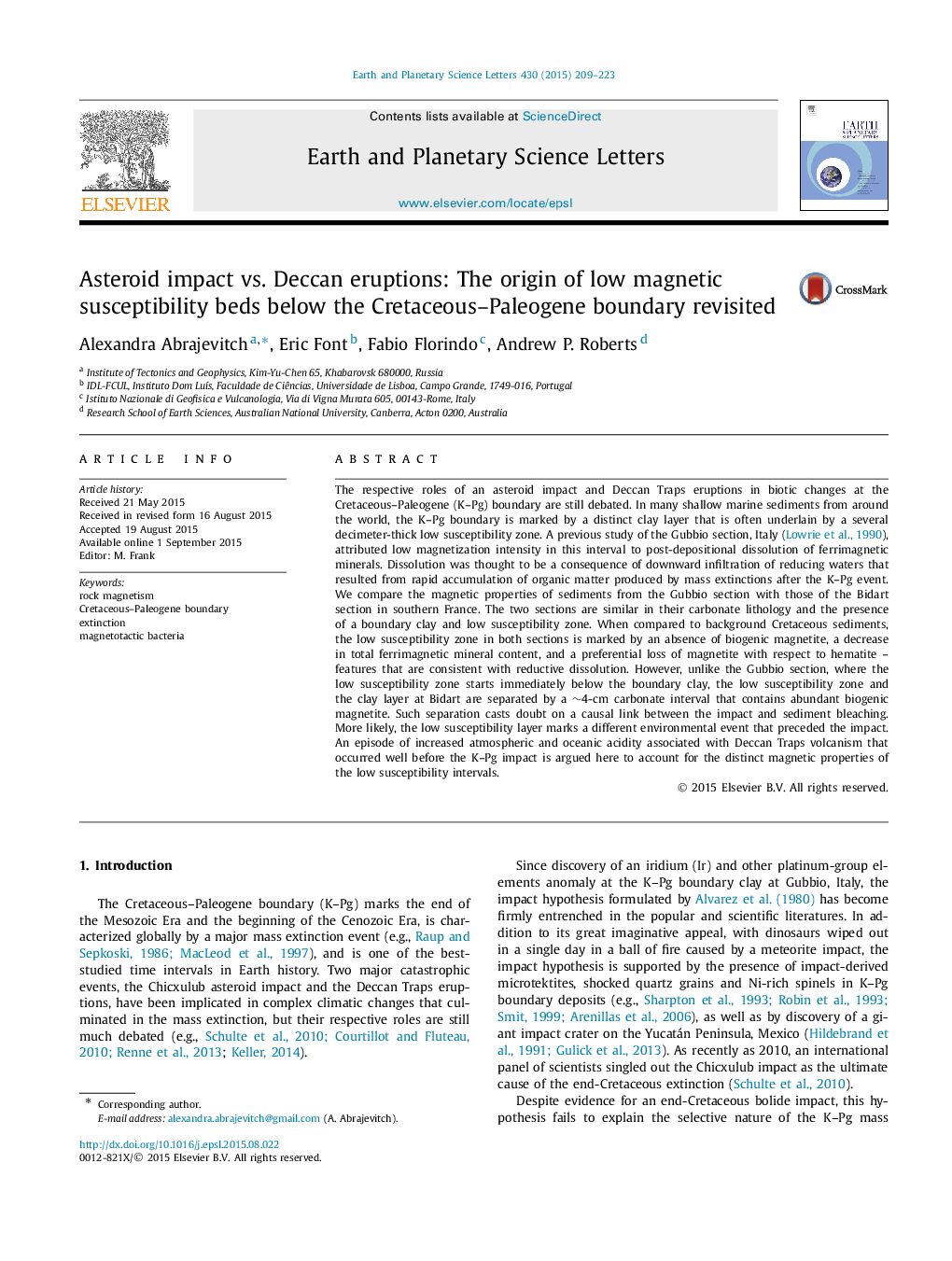| کد مقاله | کد نشریه | سال انتشار | مقاله انگلیسی | نسخه تمام متن |
|---|---|---|---|---|
| 6427930 | 1634726 | 2015 | 15 صفحه PDF | دانلود رایگان |
- Magnetic comparison of two classical K-Pg transition zones, at Gubbio and Bidart.
- Biogenic magnetite is absent in low susceptibility zone (LSZ) below the K-Pg boundary.
- Biogenic magnetite is present between LSZ and the impact clay layer at Bidart.
- Stratigraphic separation casts doubt on a causal link between the impact and LSZ.
- LSZ marks an episode of increased acidity associated with Deccan Traps volcanism.
The respective roles of an asteroid impact and Deccan Traps eruptions in biotic changes at the Cretaceous-Paleogene (K-Pg) boundary are still debated. In many shallow marine sediments from around the world, the K-Pg boundary is marked by a distinct clay layer that is often underlain by a several decimeter-thick low susceptibility zone. A previous study of the Gubbio section, Italy (Lowrie et al., 1990), attributed low magnetization intensity in this interval to post-depositional dissolution of ferrimagnetic minerals. Dissolution was thought to be a consequence of downward infiltration of reducing waters that resulted from rapid accumulation of organic matter produced by mass extinctions after the K-Pg event. We compare the magnetic properties of sediments from the Gubbio section with those of the Bidart section in southern France. The two sections are similar in their carbonate lithology and the presence of a boundary clay and low susceptibility zone. When compared to background Cretaceous sediments, the low susceptibility zone in both sections is marked by an absence of biogenic magnetite, a decrease in total ferrimagnetic mineral content, and a preferential loss of magnetite with respect to hematite - features that are consistent with reductive dissolution. However, unlike the Gubbio section, where the low susceptibility zone starts immediately below the boundary clay, the low susceptibility zone and the clay layer at Bidart are separated by a â¼4-cm carbonate interval that contains abundant biogenic magnetite. Such separation casts doubt on a causal link between the impact and sediment bleaching. More likely, the low susceptibility layer marks a different environmental event that preceded the impact. An episode of increased atmospheric and oceanic acidity associated with Deccan Traps volcanism that occurred well before the K-Pg impact is argued here to account for the distinct magnetic properties of the low susceptibility intervals.
Journal: Earth and Planetary Science Letters - Volume 430, 15 November 2015, Pages 209-223
